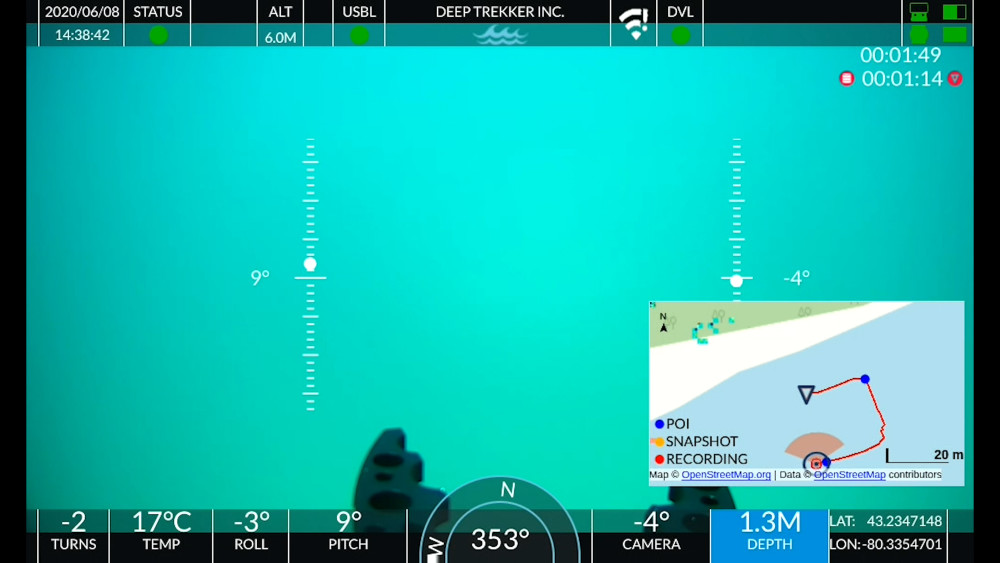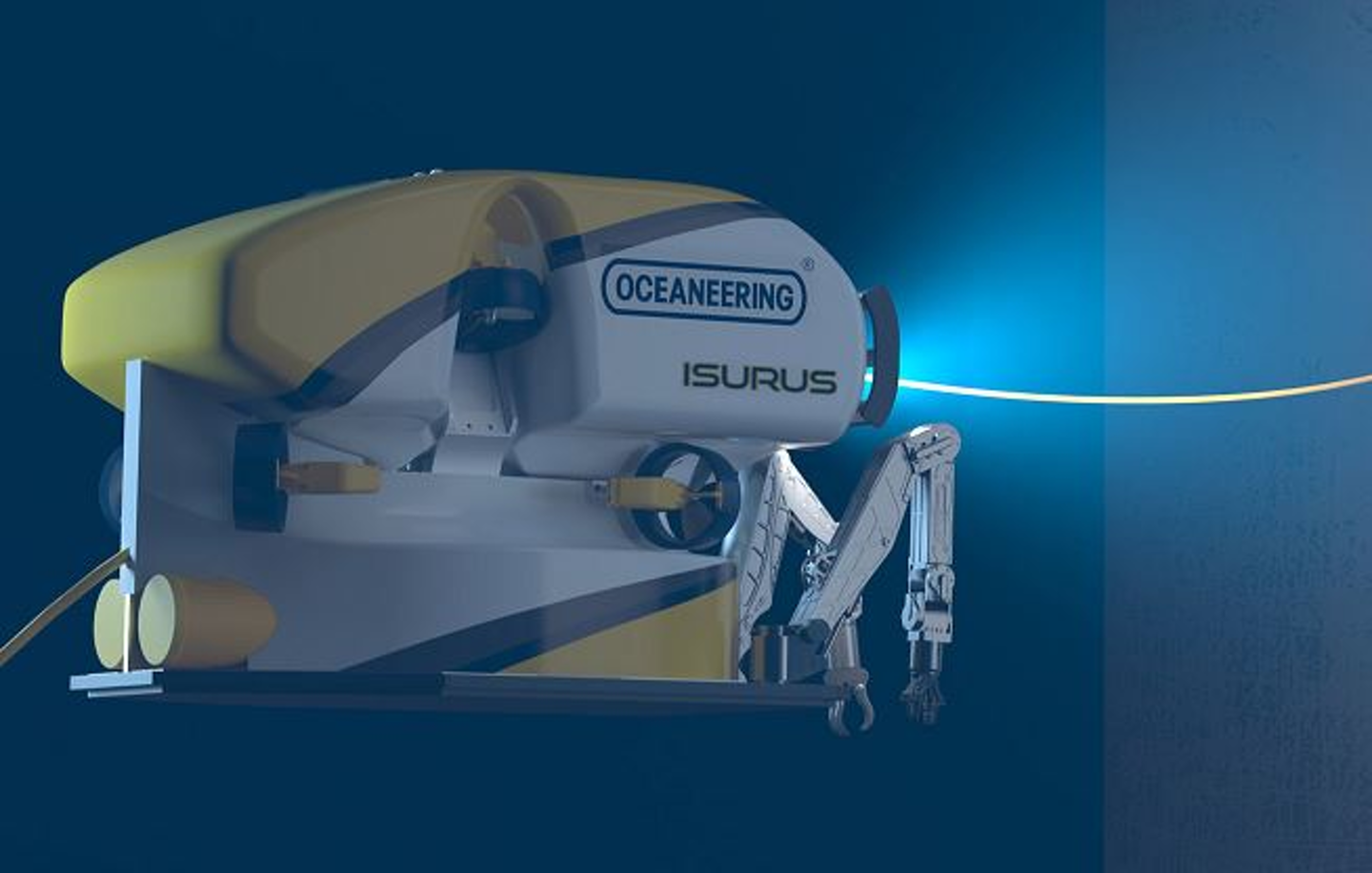Home › Forums › ROV › ROV Technical Discussions › Video system and matrix
- This topic has 21 replies, 9 voices, and was last updated 13 years, 5 months ago by
luckyjim37.
-
AuthorPosts
-
February 11, 2011 at 7:04 pm #30311
Raymond
ParticipantHi Truud,
I guess there are three issues here, 1) getting the video from the ROV to th surface, 2) distributing it at the surface and 3) recording at the surface. there are people on here better placed to answer 1) but as Ron says most cameras will be SD composite video so sending up a mux to the surface sounds safest bet. 2) distribution at the surface will depend on the signal you end up with, again there ar better people on here to answer that, however if you want to stream the video to the beach or a website then we can help you with that. 3) recording at the surface. We, NETmc Marine, have probably the widest range of DVRs designed for this market, which model you go for will depend on the type of operations you do. For example, if you want to do structural inspection with Coabis or another integrity package our DVR Inspector is the way to go, big users of this product include Subsea 7, Technip and Fugro Subsea Services, if you want to record black box then we have the 73fifty BB unit or for general video recording the standard 73fifty will do. if you want to do synchronised pipeline inspection then you might consider our Triops.
It might be best for you to have a look at our webste http://www.netmcmarine.co.uk . have a browse then get in touch. good luck.
February 17, 2011 at 8:20 am #30326Trond Ruud
ParticipantHow would we go about sending HD video to the surface?
HD-SDI? How much bandwidth would each camera demand?
February 17, 2011 at 12:38 pm #30327Savante
Participanttruud, could I reccomend you go talk to a chap called Dave Troup at bowtech products; they’ve got some experience in this. I think they’ve just launched an HD stereo-imaging camera too, might interest you if you have control over the spread at this stage.
+44 (0) 1224 772345
good luck !!
grant
February 17, 2011 at 3:28 pm #30328Glevum
ParticipantIn my experience, the best way to send HD to the surface is to use a camera that has a fibre converter internally.
If you send component to the pod and convert it to HD-SDI and then mux it onto the fibre it is very difficult not to introduce noise into the signal.
It is hard to drive a digital HD-SDI through a subsea connector.
Insite do two HD cameras which have internal fibre converters. I have not used the Zeus since it is very expensive, but have used the Mini Zeus on both ROV and towed Camera sled.
Insite are working on a version of the Mini Zeus that can be wdm’d with other fibre units on a single fibre.
Incidentally the Mini Zeus has a dome port and wider field of view than most of the other low end HD cameras.
I have no connection with Insite.
March 12, 2011 at 7:48 pm #30329Raymond
ParticipantMost of the HD camera guys, Kongsberg, Insite, Bowtech and ROS, will give you the option of HDSDI output from the camera, i think they all use the same convetrter box from AJA.
I think all the cameras are similar electronically, however as stated in a previous posting the Insite camera has a water corrected dome front port, so the images might be corrected a bit better, especially at the edges of the image.
NETmc Marine’s HD DVR Inspector can record any of these HDSDI signals.
if your ROV hasd a very short umbilical, say 100m, you can send the HD signal up over coax, after 100m the signal is not strong enough.
Note, the stereo HD camera from Bowtech, looks very nice, but it does, i beleive, have to send each cameras signal up separate fibres.
March 16, 2011 at 10:07 am #30330Trond Ruud
ParticipantJust a little update.
HD cameras have been scrapped due to price. So we’re going SD over composite cables into POD.
By doing this, fiber component costs are lowered significantly.
In the process of looking at HD-cameras we tested the Haivision Makito encoder. This product is specialized in low-latency video encoding. The latency on this encoder is very low(some 70ms), and can be compared with analog solutions. It is quite expensive. However, compared to fiber MUXes from Prizm and Focal it is actually cheaper.
March 17, 2011 at 1:43 pm #30331luckyjim37
ParticipantI have found the same as Raymond with regard to the camera outputs most of them will put whatever connectors on you want and output to suit it all just a case of waving the right amount of pound signs at the manufacturer. I did find that the analogue output converting to SDI in the POD was significantly cheaper than outputting from the camera as fibre. I guess it is a case of what you are using the gear for and how much you are willing to pay to achieve the end result.
Working for an poor institute from Ireland cheap is good and local and cheap is better.
One product I have been a bit involved in which looks quite exciting is the LED lighting range from Cathx a company based in Ireland but who seem to be moving forward rapidly. Technically they a bunch of lighting geeks but can explain things well in lamens terms for idiots like me. The thing I like best about the products is the versatility of what power and control systems you can shove through them. Such as SMD dimmer boards, 232/485 an array of voltages. You just via infa-red control tell the light what to expect and it does the rest.
Back on topic which SD cameras have you decided to use? We currently have a selection of Kongsberg and Insite. I like the Insite cameras due to the quality of the image but also the support you get from EDS engineering the UK supplier is fantastic. I have had reason to contact them a few times mostly due to physical damage to the cameras and they have been very efficient. Saying that Kongsberg in Aberdeen are very good to deal with as well.
-
AuthorPosts
- You must be logged in to reply to this topic.



